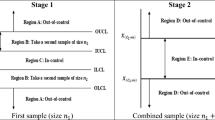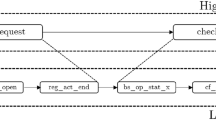Abstract
Planning for the future is an important activity both at the individual and organizational levels. Planning consists of defining alternative actions to handle various events in the future. The alternatives arise becau]se of different possible outcomes of events. A plan consists of a sequence of actions to be carried out for each possible outcome. In the context of database modeling, the actions are operations on a database. A database management system should enable its users to define events and alternatives, and also allow them to interact with the database under different alternatives (possibly to evaluate different plans). The existing temporal data models treat the future analogous to the past or present; they provide for one future path (in the sense that facts valid at some future time can be stored), but do not provide support for alternatives in the future. In this paper, we present a model for incorporating events and alternatives by extending the temporal data model to support branching time. The extended model permits definitions of events, their interdependencies and associated actions. The events that affect an object are modeled by a tree, permitting an object to have different states at the same valid time but under different alternatives. The branching time paradigm is obtained by superimposing a linear valid time on the event tree. We extend the temporal relational algebra and the Temporal SQL2 to support a branching time data model. The paper also briefly deals with the uncertainties associated with future planning as well as probabilities of possible event outcomes. Finally, we sketch an implementation strategy for the branching time data model.
Similar content being viewed by others
References
J. F. Allen. Maintaining Knowledge about Temporal Intervals, Comm. of ACM 26(11), 832–843, 1983.
M. H. Bohlen, R.T. Snodgrass, M. D. Soo. Coalescing in temporal databases, in 22nd International Conference on Very Large Data Bases, Mumbai(Bombay), India, September 1996, pp.180–191.
S. Chakravarthy. Active database management systems: Requirements, state-of-the art, and an evaluation. In: H. Kangassalo (ed.), Entity-Relationship Approach, 1991.
T. L. Dean and D. V. McDermott. Temporal data base management, Artificial Intelligence 32, 1–55, 1987.
E. A. Emerson, J. Srinivasan. Branching time temporal logic. In: Noordwijkerhout (ed.), School/Workshop on Linear Time, Branching Time and Partial Order in Logics and Models for Concurrency, The Netherlands, May/June 1988, pp. 123-172.
A. Gal, D. Dori. Combining simultaneous values and temporal data dependencies. In: L. Chittarao et al. (eds), Proc. Time’96, IEEE Comp Sci Press, May 1996, pp.112–119.
A. Gal, O. Etzion. New Perspectives in Temporal Databases, Technical Report ISE-TR-93-6, Technion-Israel Institute of Technology, Haifa, Israel, September 1995.
A. Galton. Temporal Logic and Their Applications, Academic Press, 1988.
L. E. McKenzie, R. T. Snodgrass. Evaluation of relational algebras incorporating the time dimension in databases, ACM Computing Surveys 23(4), 1991, 501–543.
A. N. Prior. Past, Present and Future, Clarendon Press: Oxford, 1967.
ACT-NET Report. The Active Database Management Systit Manifesto, SIGMOD Record, 25(3), September 1996, 40–49.
N. Rescher, A. Urquhart. Temporal Logic, Springer-Verlag: New York, 1971.
N. L.Sarda. HSQL, a historical query language. In: Temporal Databases: Theory, Design and Implementation, Benjamin/Cummings Publishing Co. Inc., 1993, Chapter 5.
R. T. Snodgrass. The Temporal Query Language TQuel, ACM Transactions on Database Systems 12(2), 1987, 247–298.
R. T. Snodgrass, M. H. Bohlen, C. S. Jensen, A. Steiner. SQL/Temporal—A Change Proposal, ISO/IEC JTC1/SC21/W43 DBL LHR-096 ANSI X3H2-95-485, December 1995.
R. T. Snodgrass et al. The TSQL2 Temporal Query Language, Kluwer Academic Publishers, 1995.
A.U. Tansel et al. Temporal Databases: Theory, Design and Implementation, Benjamin/Cummings Publishing Co. Inc., 1993.
Author information
Authors and Affiliations
Corresponding author
Rights and permissions
About this article
Cite this article
Sarda, N.L., Siva Prasada Reddy, P.V. Handling of Alternatives and Events in Temporal Databases. Knowledge and Information Systems 1, 337–368 (1999). https://doi.org/10.1007/BF03325103
Received:
Revised:
Accepted:
Published:
Issue Date:
DOI: https://doi.org/10.1007/BF03325103




